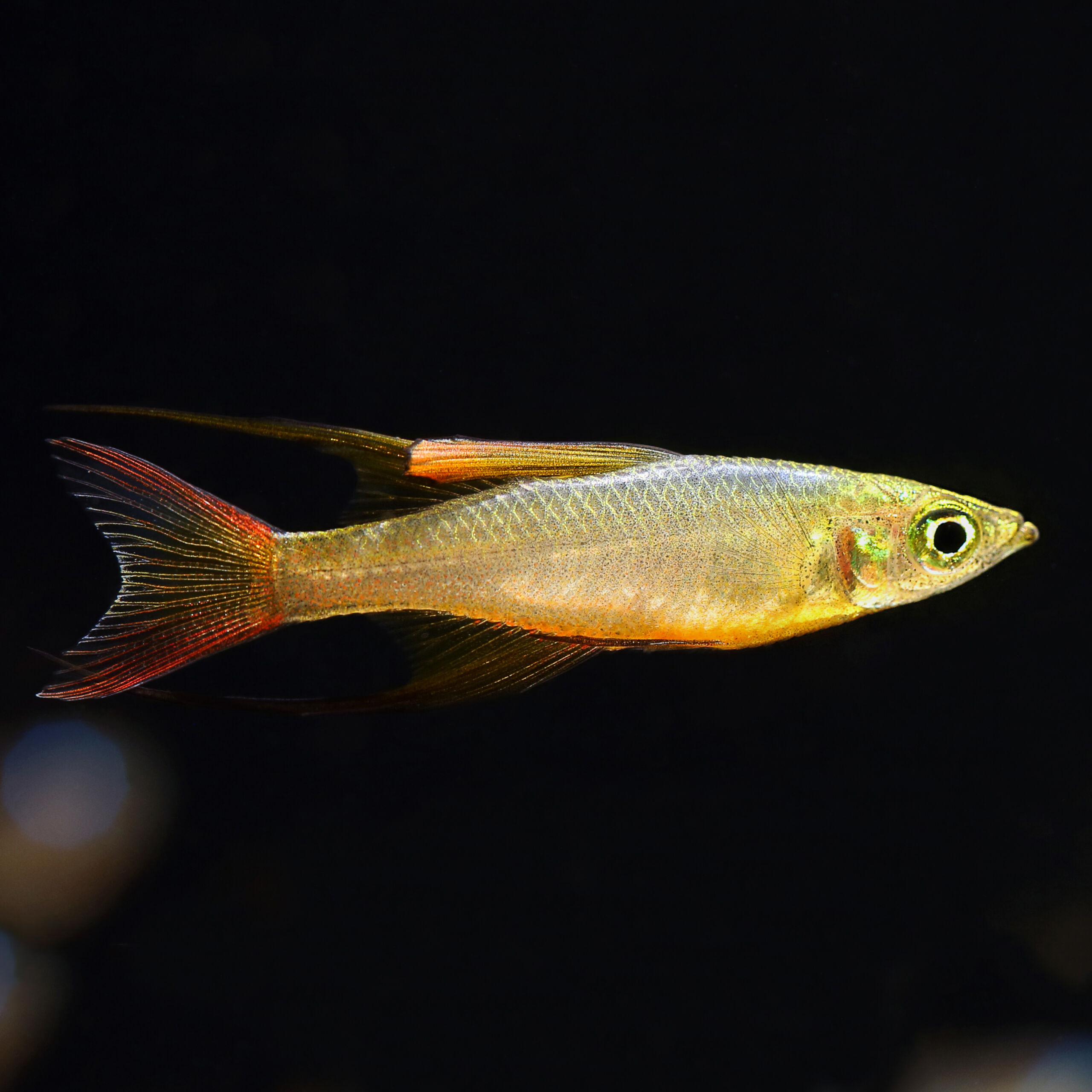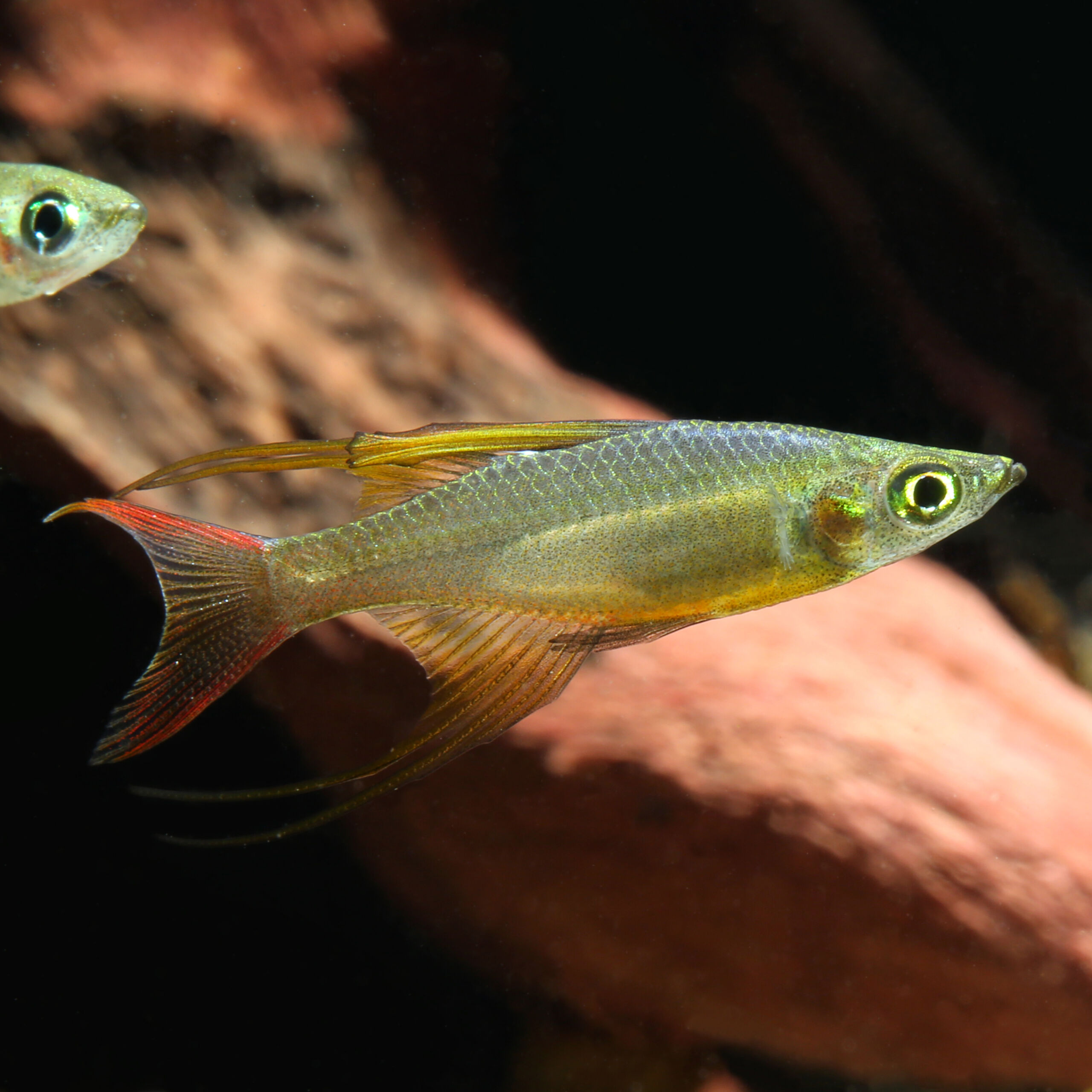Threadfin Rainbowfish
Iriatherina werneri
With its long extended fins and yellow to red coloration, the Threadfin Rainbowfish is a very attractive eye-catcher.
- strikingly elongated fins
- great colors
- quiet school fish
Out of stock
Receive in-stock notifications for this.
 Delivery in a few working days
Delivery in a few working days
 Free shipping from €60 across Austria
Free shipping from €60 across Austria





Important data
Product description & details
Also known as the Featherfin Rainbowfish, the Threadfin Rainbowfish is a beauty native to Australia and New Guinea. A special feature are the elongated fins, which give it its filigree appearance. Its natural habitat are ponds, which can have brackish or fresh water and are sometimes very acidic. This broad spectrum of water values makes this rainbow fish quite adaptable, but it is still very sensitive to changes that happen too quickly.
Care in the aquarium
Iriatherina werneri is considered to be extremely peaceful and feels at home in a swarm in aquariums with dense planting and little lighting. When socialising, care should be taken to ensure that it should only live with very small, delicate and not too lively and gluttonous fish. The reason for this is the somewhat shy and timid (eating) behavior of the Threadfin Rainbowfish. For example, dwarf rasbora, Pseudomugil species and Corydoras are suitable tank neighbors. You have to be particularly careful with the water values, since the Threadfin Rainbowfish is sensitive to fluctuations and germ contamination. A weekly, generous water change is therefore essential. However, fluctuations in temperature and water hardness should be avoided as far as possible. Getting used to the new tank should also take place slowly over at least 1.5 to 2 hours. The aquarium water should be rather soft and have a temperature between 24 and 29°C.
Feeding
Since the Threadfin Rainbowfish’s mouth is very small, it can only handle small amounts of live and frozen food as well as fine dry food. Cyclops, artemia nauplii and copepods, for example, are suitable.
Sexual characteristics and breeding
It is easy and possible to differentiate between the sexes of the Threadfin Rainbowfish quite early on. In contrast to the males, females do not have colored but completely transparent dorsal and anal fins. The fins of the females also remain shorter and the females themselves are slightly smaller than the males. For breeding in the aquarium, we recommend raising the temperature slightly to up to 30°C. In addition, the adherent spawners need a fine spawning substrate such as moss or fine-leaved plants. Ideally, the parents should be removed from the breeding tank after spawning or the eggs should be collected and transferred to a separate breeding tank. Since the eggs can hardly be seen, whole (parts of) plants can also be placed in this tank. The freshly hatched juvenile fish are fed with dust food floating on the surface, copepods and the smallest artemia nauplii.






